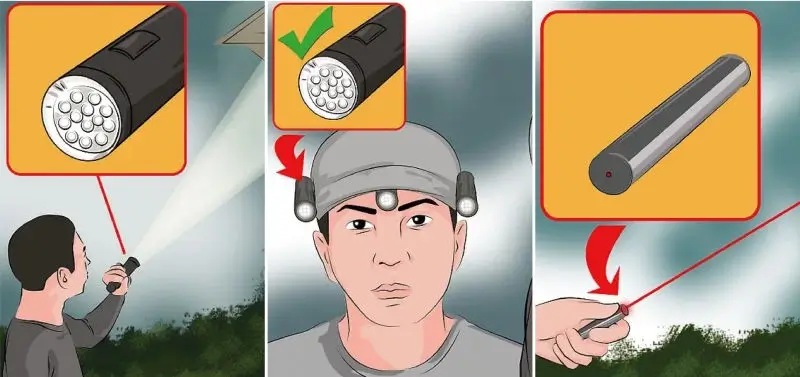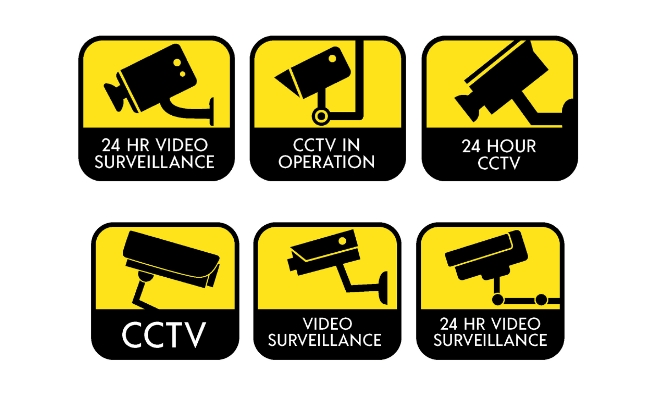Yes, security cameras can be jammed. This typically involves using devices that disrupt their signals.
In today’s world, where the feeling of safety and security is paramount, the reliance on security cameras has skyrocketed. These devices, designed to offer a sense of peace and protection, have become fixtures in homes, businesses, and public spaces. Yet, like any technology, they are not foolproof.
The possibility of jamming presents a real challenge, raising concerns among users about the reliability of their security systems. Understanding the vulnerabilities of security cameras is crucial for enhancing their effectiveness and ensuring they serve their intended purpose. This knowledge not only empowers users but also guides them in seeking solutions to safeguard their surveillance equipment against potential threats, thus maintaining the integrity of their security measures.
Introduction To Security Camera Vulnerabilities
Security cameras have become ubiquitous in modern society. They deter crime and provide evidence. Yet, they are not impervious to malicious attacks. Recognizing the potential for these devices to be compromised is critical. It ensures the privacy and security that these systems are meant to protect.
Rising Concerns In Digital Surveillance
As reliance on digital surveillance grows, so do concerns about its security. Attackers constantly seek methods to exploit vulnerabilities. This can lead to unauthorized access and control.
- Hackers can gain sensitive data.
- Personal privacy can be compromised.
- Security breaches may occur without detection.
Potential Weaknesses In Security Systems
Security systems can have several weaknesses. These vulnerabilities may allow them to be jammed or bypassed. Awareness and understanding of these can help mitigate risks.
| Vulnerability | Risks | Prevention |
|---|---|---|
| Weak Encryption | Data theft | Strong algorithms |
| Unsecured Networks | Unauthorized access | Secure Wi-Fi |
| Outdated Firmware | Exploits | Regular updates |
Users must stay informed about their security system’s potential flaws. They should take proactive steps to protect their digital assets.

Credit: blog.zositech.com
Basics Of Security Camera Operation
Understanding how security cameras function is key to grasping their vulnerabilities. This includes knowing if someone can jam them.
How Security Cameras Work
Security cameras capture video and send it to a recording device. They require power and a data connection. These cameras can be wired or wireless. Wired cameras connect via cables. Wireless cameras use Wi-Fi or other technologies.
Common Types Of Security Cameras
- Dome Cameras: Often found indoors, ceiling-mounted.
- Bullet Cameras: Long, cylindrical shape, good for outdoors.
- IP Cameras: Send video over a network, allowing remote access.
- PTZ Cameras: Pan, tilt, and zoom features for large areas.
Methods Of Jamming Security Cameras
Security cameras play a crucial role in monitoring and safety. Yet, some methods can jam them. Understanding these tactics is essential for robust security measures. Let’s delve into the common methods used to jam security cameras.
Physical Obstruction Techniques
Physical methods are straightforward. They block the camera’s view. Here are a few techniques:
- Covering the lens: Simple covers can blind cameras.
- Paint: Spraying paint can obscure the lens.
- Placing objects: Items in front of cameras can hide activities.
Signal Disruption Tactics
Signal disruption interferes with the camera’s functioning. See these common tactics:
- Wireless jamming: Devices emit signals to overwhelm camera frequencies.
- Hacking: Cyber methods can disable cameras remotely.
- Signal blockers: These tools block signals between the camera and the network.

Credit: reolink.com
Technological Tools For Jamming
In the world of security, staying ahead is crucial. Technological tools for jamming play a significant role. They disrupt security systems. This section explores how jammers work. We focus on radio frequency jammers and laser pointers.
Radio Frequency Jammers
Radio frequency jammers block signals. They make security cameras blind. These devices stop cameras from sending video data. They work by emitting strong signals. These signals confuse the camera’s own signals.
- Blocks wireless signals
- Makes cameras useless
- Used in various sizes
Users must know the camera’s frequency. Then, they select a jammer. The jammer must match this frequency to work.
Laser Pointers And Their Effects
Laser pointers can also disable cameras. They use bright light. This light overpowers the camera’s sensor. It makes the footage unusable.
- Point laser at camera
- Camera captures only bright light
- Footage becomes unclear
This method requires precision. The user must aim the laser directly at the camera.
| Tool | Method | Effectiveness |
|---|---|---|
| Radio Frequency Jammer | Blocks signals | High |
| Laser Pointer | Blinds sensor | Medium |
Both tools offer ways to jam cameras. Yet, users must consider legality and ethics.
Legal Implications Of Jamming Cameras
The topic of jamming security cameras is complex. It involves understanding legal boundaries. This section explores the legal implications of such actions.
Privacy Laws And Regulations
Many countries have strict laws about privacy and surveillance. These laws often protect people from being watched without consent. Using devices to jam cameras can break these laws.
- Laws vary by location.
- Consent is often needed to record someone.
- Jamming devices can be illegal.
Consequences Of Unauthorized Jamming
Using a jammer without permission has serious risks. The consequences can include fines and jail time.
| Action | Consequence |
|---|---|
| Using a jammer | Fines |
Protecting Your Security Cameras From Jamming
Security cameras are vital for safety. Yet, criminals may try to jam them. Protection is key. Let’s explore ways to shield your cameras.
Anti-jamming Measures
Choose cameras with anti-jamming tech. Look for frequency hopping features. Use wired connections when possible. They are harder to jam. Encrypt wireless signals for added safety.
- Frequency Hopping Spread Spectrum (FHSS) – Switches frequencies to prevent jamming.
- Wired Networks – Avoid wireless interference with cables.
- Signal Encryption – Keeps the wireless transmission secure.
Regular Maintenance And Updates
Keep cameras updated. Regular updates fix security flaws. Check for firmware updates often. Schedule maintenance to keep cameras in top shape.
- Update Firmware – Install the latest software to fix bugs.
- Physical Inspections – Regularly check for tampering or damage.
- Professional Check-ups – Have experts examine your system yearly.
Case Studies: Jamming Incidents
Security cameras protect our homes and businesses. But clever thieves use jammers to block signals. This causes cameras to stop recording. Let’s look at real jamming incidents.
Retail And Business Environments
Retail stores rely on security cameras. In 2019, a group targeted a jewelry store. They used a jammer hidden inside a coat. The jammer blocked the store’s Wi-Fi. This caused the security cameras to lose connection. The thieves stole thousands in jewels.
- Incident: Jewelry store theft
- Method: Hidden jammer
- Loss: High-value jewels
Business offices have also been hit. A tech company in California faced a breach. An employee used a small jammer. They disrupted the camera system during lunchtime. Several laptops went missing.
- Location: Tech company
- Strategy: Jammer during lunch
- Stolen items: Laptops
Residential Security Breaches
Homes are not safe from jamming. A neighborhood in Texas reported multiple break-ins. Thieves used a car jammer. They jammed wireless cameras and alarms. The thieves entered homes without being recorded.
| Location | Device Used | Result |
|---|---|---|
| Texas neighborhood | Car jammer | Homes burglarized |
In Florida, a family was on vacation. They had a smart home system. A burglar used a portable jammer. The family’s camera system went offline. The burglar stole valuables and electronics.
- Case: Family on vacation
- Tactic: Portable jammer
- Outcome: Valuables stolen
These cases show a real threat. Jammers can disable security systems. It’s important to take steps to protect your cameras from jammers.

Credit: www.youtube.com
Future Of Security: Jamming Resistance
Security cameras keep homes and businesses safe. But, some worry about jamming. Jamming blocks signals, making cameras stop working. The future of security looks at stopping jamming. This means cameras stay on, even when bad guys try to turn them off. Now, let’s explore how new tech helps stop jamming.
Advancements In Surveillance Technology
Security cameras are getting smarter. They now use wireless signals that jump around. This makes it hard to jam them. Cameras also use wires more. Wires mean no wireless signal to jam. Some cameras have a backup. If jammed, they switch to another way to send video.
The Role Of Ai In Security
Artificial Intelligence (AI) helps cameras think. Cameras with AI can tell if they’re being jammed. They then send an alert. The AI can also guess where the jamming comes from. It helps police catch the jammer. AI makes cameras smart. Smart cameras are hard to trick.
Frequently Asked Questions
Can Home Security Cameras Be Jammed?
Security cameras can indeed be jammed using devices that disrupt their signals, which may interfere with proper functioning and recording capabilities.
How Do Camera Jammers Work?
Camera jammers typically function by emitting radio frequencies that interfere with the camera’s ability to send or receive signals, rendering them ineffective.
What Are The Signs Of Camera Jamming?
Signs include sudden loss of signal or video feed, unusual static or interference, and inability to access the camera remotely.
Is It Legal To Jam Security Cameras?
Jamming security cameras is illegal in many jurisdictions because it can interfere with emergency services and infringe upon privacy laws.
How To Protect Cameras From Jamming?
Enhancing camera security can involve using wired connections, employing anti-jamming software, and regularly checking signal strength to detect issues early.
Conclusion
Security systems have come a long way, but so have jamming techniques. It’s clear that while surveillance cameras offer a level of deterrence, they’re not invulnerable. Protecting your privacy and property requires understanding these risks and taking proactive steps. Stay informed, stay secure, and never underestimate the importance of a well-maintained security setup.




